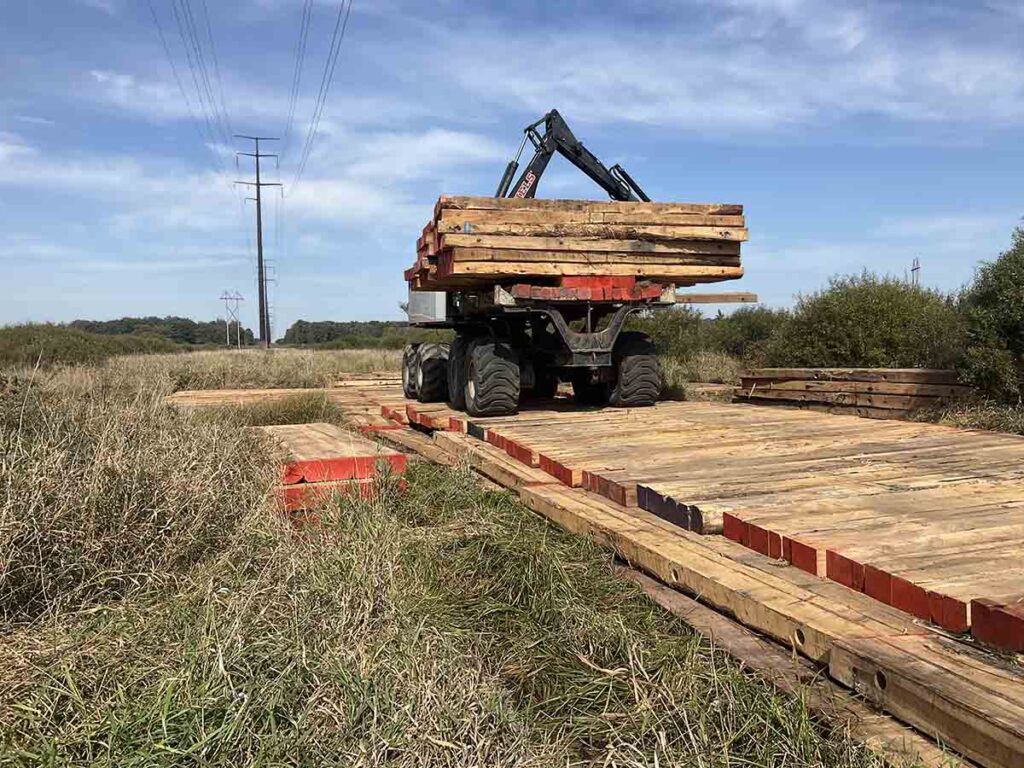
Great River Energy’s Priti Patel was standing in a Minnesota cornfield, the ground matted and ready for seven big cement trucks to pour the foundation for a 180-mile high-voltage transmission line, when she fully realized the project’s promise.
“It really hit me as I was in the middle of this field—in the middle of someone’s property—that we’re all in this together to build and ensure the future grid,” said Patel, vice president and chief transmission officer for the Maple Grove-based generation and transmission cooperative.
After over five years of study, public meetings and achieving regulatory approvals, the $1.4 billion Northland Reliability Project is being built across northern and central Minnesota to deliver 3,000 megawatts to the power-hungry Midwest by 2030.
This double-circuit-capable, 345-kV transmission line will carry electricity from a wide energy portfolio across the region to serve Great River Energy’s 26 member distribution cooperatives and the entire Midwest.
“This project will move energy from natural gas, coal, nuclear, hydro, wind, solar batteries, to where it’s needed and when,” said Patel. “It will keep the lights on across the Midwest and enhance the stability of the grid as well.”
Patel and other officials from Great River Energy and investor-owned Minnesota Power broke ground in October on the historic project that will connect to substation assets owned by both utilities.
“We’ve had a collaborative relationship for a long time to help serve customers together,” said Dan Gunderson, vice president of transmission and distribution at Minnesota Power.
“That relationship really leads to sometimes larger, more robust solutions for transmission planning, which essentially that’s what the Northland Reliability Project is. It’s connecting two disparate regions together to solve some important problems related to reliability.”
The project is the first to launch under the regional transmission operator MISO’s long-range plan for 18 projects in nine states to bolster grid reliability.
“Because of the new backbone we’re building to meet the evolution of generation and increased demand, power will flow from Minnesota, North Dakota, South Dakota, Michigan, Illinois—all the states with these initial MISO-approved transmission projects—to support reliability not only in northern Minnesota but the broader region,” said Patel.

Benefits to Great River Energy member co-ops and their consumer-members are expected to more than compensate for the project’s cost, which will be spread across the MISO RTO territory.
According to an economic impact study from the University of Minnesota, Duluth, the project will add $705.3 million in employee wages and benefits and produce more than $1 billion in value-added spending, such as taxes, labor and capital, statewide from 2023 to 2030. On average, 246 jobs will be directly supported by the Northland Reliability Project each year.
The six-county region hosting the project will also see a significant economic boost, including $366.3 million in increased employee wages and benefits, the study said.
The G&T locally hired labor and resourced materials, where possible, to aid impacted communities. “To us, they represent families, they represent small business, and we’ve been really intentional about creating positive economic benefits wherever we can,” said Patel.
Just as it’s geared to handle escalating demand from large industrial loads and overall electrification, the Northland Reliability Project is also being built to endure increasingly extreme weather sweeping the Midwest. The conductor is more resistant to icing, one of the biggest threats to transmission line resiliency in Minnesota, and the project’s overall structures and foundations are designed to withstand extraordinary wind speeds.
But long before the project’s engineering, Great River Energy was building a foundation of public trust and engagement with members at the end of the line. The G&T went beyond the regulatory requirement for public hearings and held at least 20 open houses, where challenges and solutions were discussed among a wide array of stakeholders.
“The key to future success is early-and-often engagement in the impacted communities,” said Patel. “We met with every county board, township, snowmobile organization, ATV club, mountain biking club. If any landowner wanted to meet with us one-on-one, we met with them on their terms.”
As evidence, surrounded by cornstalks, she witnessed the launch of the largest coordinated transmission buildout since the electrification of the Midwest.
“Success with projects like this start and end with communities.” Patel said. “But for the grace of our communities and our landowners are we able to build for the reliability of the future.”
Cathy Cash is a staff writer for NRECA.